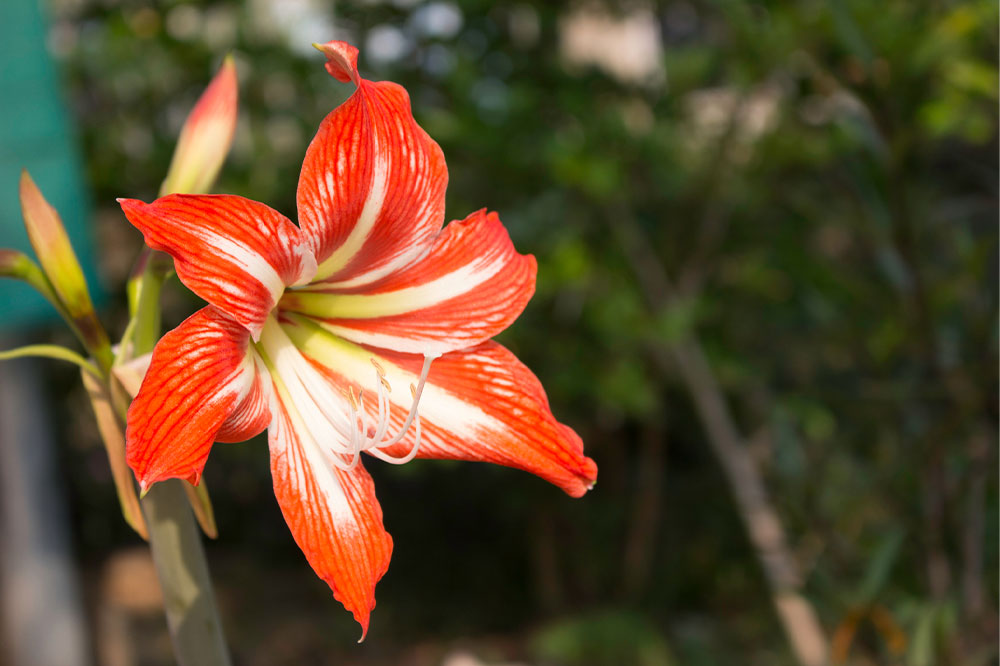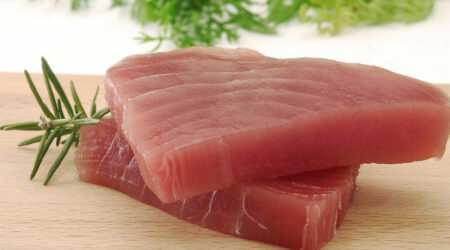7 common plants that are dangerous for cats

Cats are naturally curious and tend to grab and play with things they find in their environment. So, they can end up grabbing or even chewing on dangerous plants, which can cause multiple complications and health-related issues. Cat parents should exercise caution when exposing their feline companions to outdoor environments or their own home and garden that can house poisonous plants. Some of the common plants that are toxic to cats are:
Amaryllis
Amaryllis is a popular indoor and outdoor plant that is grown in pots and containers, making it a popular gift during the holiday season. Cats can be drawn to its vibrant flowers, however, the plant contains toxins like lycorine and phenanthridine alkaloids. While the bulbs have the highest concentration of toxins, the stalks are also poisonous to cats. If ingested, cats can experience symptoms like drooling, vomiting, diarrhea, and tremors. They may even seem lazy, lethargic, and show no willingness to eat. Other severe effects include a drop in their blood pressure and seizures.
Autumn crocus
The autumn crocus contains colchicine and other alkaloids, which can be toxic to many animals, including cats. If cats chew on the flower or seeds of this ornamental plant, they can experience vomiting, diarrhea, and drooling. Ingesting it can also lead to gastrointestinal issues, breathing problems, fever, loss of appetite, and even bloody stool. Symptoms may begin to appear shortly after ingesting the plant or days after.
Rhododendrons or azaleas
Rhododendron is a common shrub with many subspecies, including azaleas. Its beautiful bell-shaped flowers make it a popular choice among gardeners. However, all parts of this shrub are extremely poisonous to cats. The toxicity is caused by grayanotoxins, a component that contains diterpenoid compounds. On ingestion, these toxins attach themselves to the cat’s cells and wreak havoc on their tiny bodies. It impacts the normal functioning of the feline’s internal organs and central nervous system. The damage can extend to the cat’s GI tract and can cause hemorrhage or internal bleeding, pneumonia, and kidney and liver failure. Initial symptoms include nausea, vomiting, diarrhea, nasal discharge, and drooling. Other severe complications of rhododendron poisoning in cats are blindness and limb paralysis.
Castor beans
Castor beans are used to produce oil as a natural remedy for constipation, however, these beans can be highly dangerous for pets. The toxin at play here is ricin, present in high amounts in castor beans. This plant can be deadlier than cobra venom to cats. Even a small amount of the toxin can be fatal or can induce symptoms like nausea, vomiting, diarrhea, fever, loss of appetite, weakness, and tremors. More serious consequences of castor bean poisoning are kidney failure, seizures, and coma.
Chrysanthemum
This plant is easy to grow, requires minimum maintenance, and comes with beautiful, bright-colored flowers. However, chrysanthemum is off-limits to cats as it contains toxins like lactones, pyrethrins, and sesquiterpene and can cause severe gastrointestinal discomfort if ingested. Initial symptoms include vomiting, diarrhea, itching, loss of appetite, skin lesions, or swelling.
Cyclamen
Cats are drawn to the bright butterfly-shaped flowers of cyclamen (or sowbread plant). It contains toxins known as terpenoid saponins, which get absorbed into the cat’s bloodstream when ingested. Cyclamen poisoning can be fatal and cause irregular heartbeat and seizures. Other complications include gastritis, pain, paralysis, terminal convulsions, and respiratory failure. Initial symptoms include drooling, diarrhea, vomiting, lack of appetite, and roughening of the cat’s coat.
Paperwhite
Paperwhite, along with other plants of the Narcissus genus such as daffodil and jonquil, contains toxic components like galantamine, calcium oxalate crystals, and narciclasine along with a primary toxin lycorine. Paperwhite plants are poisonous to most animals, and cats may be attracted to the bright flowers or bulbs that are the most toxic part of the plant. Ingestion of this plat can lead to convulsions, increased heart rate, breathing and respiratory problems, and kidney damage in cats. Common initial symptoms include drooling, nausea, vomiting, diarrhea, and stomach aches.
Not just poisonous plants, pets are susceptible to a variety of infections, diseases, and infestations which can lead to serious health complications. Here are a few popular treatment options that can keep them safe:
Bravecto for cats
This topical solution for cats can provide 2-month protection from fleas, ticks, and also heartworm, which is an infection carried by mosquitoes. Bravecto Plus can also treat other infections such as intestinal roundworm and hookworm. A single dose every two months can protect your cat from a host of deadly infections caused by parasites.
Simparica
This is a fast-acting chewable treatment option for dogs and is effective in treating flea and tick infestation in dogs over six months. Simparica is approved for use in dogs, and a veterinarian doctor should be consulted before using this for cats.
Advantix
This is a flea and tick treatment suitable for dogs. Advantix or K9 Advantix II can also repel mosquitos, protecting dogs from infections like heartworm. Cats can be sensitive to the product’s active ingredients, so a vet should be consulted before opting for this product. In fact, pet parents that have both cats and dogs in the house should consult a vet before using it for their dogs. The same company offers another product called Advantage, which is considered to be safe for cats.





